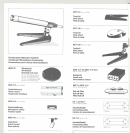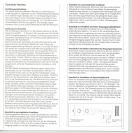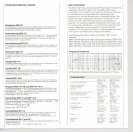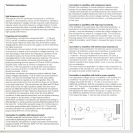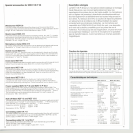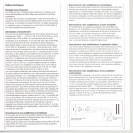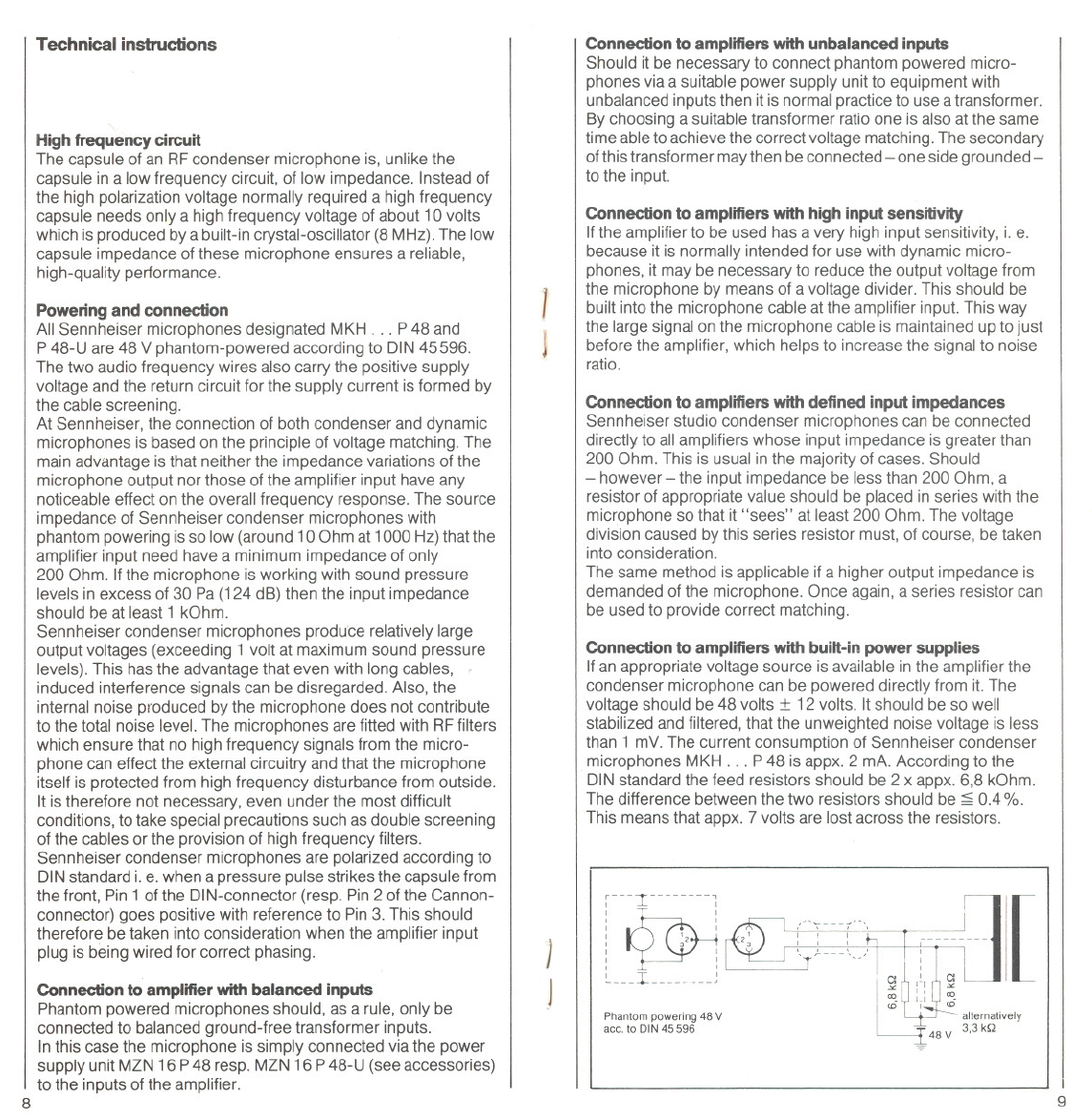
Technical instructions
High frequency circuit
The capsule of an RF condenser microphone is, unlike the
capsule in a low frequency circuit, of low impedance. Instead of
the high polarization voltage normally required a high frequency
capsule needs only a high frequency voltage of about 10 volts
which is produced bya built-in crystal-oscillator (8 MHz). The low
capsule impedance of these microphone ensures a reliable,
high-quality performance.
Powering and connection
All SennheisermicrophonesdesignatedMKH , . . P 48 and
P 48-U are 48 V phantom-powered according to DIN 45596.
The two audio frequency wires also carry the positive supply
voltage and the return circuit for the supply current is formed by
the cable screening.
At Senn heiser, the connection of both condenser and dynamic
microphones is based on the principle of voltage matching. The
main advantage is that neither the impedance variations of the
microphone output nor those of the amplifier input have any
noticeable effect on the overall frequency response. The source
impedance of Senn heiser condenser microphones with
phantom powering is so low (around 10 Ohm at 1000 Hz) that the
amplifier input need have a minimum impedance of only
200 Ohm. If the microphone is working with sound pressure
levels in excess of 30 Pa (124 dB) then the input impedance
should be at least 1 kahm.
Sennheiser condenser microphones produ'ce relatively large
output voltages (exceeding 1 volt at maximum sound pressure
levels). This has the advantage that even with long cables, .
induced interference signals can be disregarded. Also, the
internal noise produced by the microphone does not contribute
to the total noise level. The microphones are fitted with RF filters
which ensure that no high frequency signals from the micro-
phone can effect the external circuitry and that the microphone
itself is protected from high frequency disturbance from outside.
It is therefore not necessary, even under the most difficult
conditions, to take special precautions such as double screening
of the cables 01'the provision of high frequency filters.
Sennheiser condenser microphones are polarized according to
DIN standard i. e. when apressure pulse strikes the capsule from
the front, Pin 1 of the DIN-connector (resp. Pin 2 of the Cannon-
connector) goes positive with reference to Pin 3. This should
therefore be taken into consideration when the amplifier input
plug is being wired for correct phasing.
Connection to amplifier with balanced inputs
Phantom powered microphones should, as a rule, only be
connected to balanced ground-free transformer inputs.
In this case the microphone is simply connected via the power
supply unit MZN 16 P48 resp. MZN 16 P 48-U (see accessories)
to the inputs of the amplifier.
8
Connection to amplifiers with unbalanced inputs
Should it be necessary to connect phantom powered micro-
phones via a suitable power supply unit to equipment with
unbalanced inputs then it is normal practice to use a transformer.
By choosing a suitable transformer ratio one is also at the same
time able to achieve the correct voltage matching. The secondary
ofthistransformermaythenbeconnected- one sidegrounded-
to the input.
Connection to amplifiers with high input sensitivity
If the amplifier to be used has a very high input sensitivity, i. e.
because it is normally intended for use with dynamic micro-
phones, it may be necessary to reduce the output voltage from
the microphone by means of a voltage divider. This should be
built into the microphone cable at the amplifier input. This way
the large signal on the microphone cable is maintained up to just
before the amplifier, which helps to increase the signal to noise
ratio.
Connection to amplifiers with defined input impedances
Sennheiser studio condenser microphones can be connected
directly to all amplifiers whose input impedance is greater than
200 Ohm. This is usual in the majority of cases. Should
- however - the input impedance be less than 200 Ohm, a
resistor of appropriate value should be placed in series with the
microphone so that it "sees" at least 200 Ohm. The voltage
division caused by this series resistor must, of course, be taken
into consideration.
The same method is applicable if a higher output impedance is
demanded of the microphone. Once again, aseries resistor can
be used to provide correct matching.
Connection to amplifiers with built-in power supplies
If an appropriate voltage source is available in the amplifier the
condenser microphone can be powered directly from it. The
voltage should be 48 volts :t 12 volts. It should be so weil
stabilized and filtered, that the unweighted noise voltage is less
than 1 mV. The current consumption of Sennheiser condenser
microphones MKH . . . P 48 is appx. 2 mA. According to the
DIN standard the feed resistors should be 2 x appx. 6,8 kahm.
The difference between the two resistors should be ~ 0.4 %.
This means that appx. 7 volts are lost across the resistors.
J
J
imrum_-~
n
r
:
~
T i~n_J
:
:2 2:
~
:!: h --mm-
, , , _n_, . '
J ~.
' ,
T -. .,
Lu_Lm ! . 91 ), 91
e"_m-,,". '"' I;~ ~ .",m"",
acc.10DIN45596 L~ 48V 3,3kQ
9




